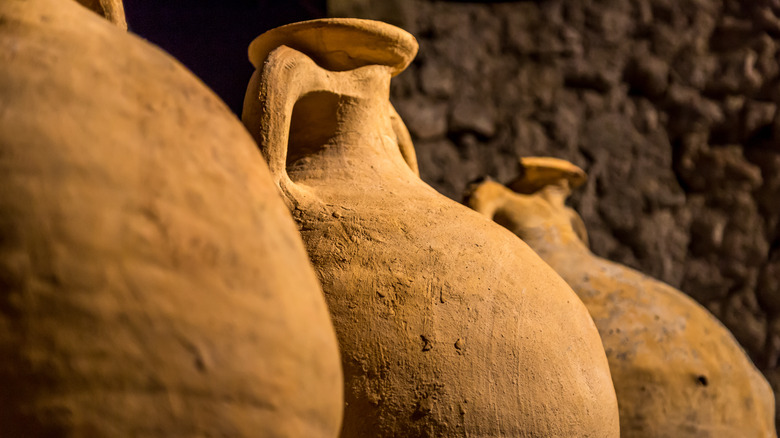Researchers Made A 1,500 Year-Old Discovery Thanks To One Disgusting Finding
For a long time, it was believed that Christopher Columbus brought back syphilis along with the news of a newly discovered world to Europe (via Scientific American). However, a discovery of 50 European skeletons that predated Columbus's voyage showed that chronic syphilis existed prior to the sailing of the Santa Maria. Bones, in this case, disproved the theory blaming Columbus, but did show that persons who ate predominately fish in coastal regions were afflicted.
Colonization and exploration have long been associated with the spread of disease. Mostly human remains have been helpful in examining the ways in which these diseases were actually spread and/or acquired (via Harvard). However, researchers are discovering more weird ways diseases changed history and about the human body and its afflictions by taking a closer look at the tools humans used (via CNet). Recently, archaeologists discovered a 1,500-year-old Roman household device that is revealing a lot more about the health of Romans than you might expect.
A relief?
In the second century, the Roman Empire had a population of 75 million people that spanned from northern Britain to northern Africa (via Aeon). Historians have various theories about what specifically lead to the fall of the empire, which include climate change, disease, and/or political faux pas. Fortunately, archaeologists are still able to study the tools the Romans left behind in order to better assess how individual Romans lived.
According to Live Science, archaeologists on a recent expedition to a Roman villa in Sicily found what appeared to be a regular old ceramic pot. Fortunately, the researchers scratched the surface of the pot and didn't sniff — it turned out that what appeared to be a regular flower pot or holding container was actually a chamber pot used as a toilet. For years, these sort of vessels have been thought of as types of storage units, but a microscopic examination of the interior of the pot revealed the presence of whipworm eggs, which come from an infection in the large intestines.
So where there's smoke there's fire ... or where there are intestinal worms there's feces, which imply that these kind of pots were probably used more often for relieving one's self than for preserving food for the winter or carrying water.
When in Rome
Unlike modern day single room bathrooms, Roman bath houses (per Smithsonian Magazine) had a tepidariums, a transitional room that separated the hot section for bathing and the cooler section for lowering body temperature (via Wellesley University). This prevented the body from a temperature shock while transitioning between extreme temperatures. Since there was no latrine present in this transitional space, the pot served as a place to relieve oneself before entering the showering chambers. Uncovering the ancient worms only helps to prove this hypothesis — whipworms would not be present in a container only used for floral decor or storage. Due to the measurements, archaeologists believe the pots were used in conjunction with a wicker chair to make the seating more comfortable.
The discovery of this pot and its parasitic analysis have set a new precedent for the ways in which ancient relics are studied, as microscopic evidence can give clues about the health, sanitation, diet, and more of ancient civilizations (via Science Direct). Since whipworms are considered a fecal-to-oral transmission, we might deduce that washing one's hands after using the loo was not a top priority for the Roman people. However, some experts believe that whipworm was spread through the soil from animal manure and transmitted by hand, as Romans consumed much of their diet hand to mouth.
Romans are also known to have eaten on their bellies to aid with digestion, and to vomit between meals (via CNN). So let's just hope that they were able to keep their togas clean, if nothing else.


